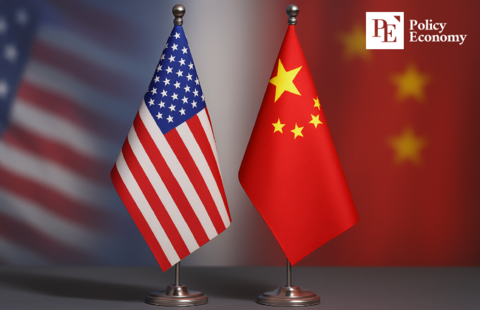Trump's Tariff Blitz Triggers Capital Flight: ‘Sell America’ Becomes a Reality
Input
Modified
U.S. Capital Markets Suffer Triple Decline, Undermining Investor Confidence Trump’s Unpredictable Tariff Policies Fuel Market Uncertainty and Capital Flight Real Income Erosion and Recession Risks Now in Sharp Focus

Since President Donald Trump launched a full-scale global tariff war, one theme has emerged across U.S. financial markets: capital flight. The pillars of investor trust—the dollar, U.S. Treasury bonds, and equities—are now shaking in unison. Once seen as unshakable symbols of American financial supremacy, all three are under pressure, driven by growing unease over a tariff policy that appears to lack both consistency and principle. Disillusioned by this uncertainty, global investors are increasingly embracing a strategy of “Sell America.” The scale of the capital exodus has become so pronounced that some analysts are now questioning whether the United States can continue to function as the world’s preeminent economic power.
Simultaneous Decline in Bonds, Dollar, and Equities
On April 14 (Korea Time), the investment banking industry reported that market volatility has intensified on Wall Street following President Trump’s tariff escalation. A weaker dollar and a massive selloff in U.S. Treasuries dominated investor sentiment.
While Trump temporarily delayed the imposition of some of the harshest tariffs, avoiding a full-blown crisis, the S&P 500 still surged 5.7% last week, marking its best weekly performance since November 2023. However, the index remains 13% below its February 19 all-time high, amid persistent trade tensions between the U.S. and China and uncertainty surrounding tariffs yet to be enforced.
Despite the stock rebound, confidence in U.S. assets has been shaken. Investors spent much of last week dumping Treasury bonds, leading to historic spikes in yields. On April 11 alone: The 10-year Treasury yield jumped 10 basis points, totaling nearly 50bp of gains for the week—the largest one-week spike in 24 years. The 2-year yield rose 12bp, with a total increase of over 30bp for the week. The U.S. Dollar Index, which measures the dollar’s strength against six major currencies, plunged to 99.00 before slightly rebounding to 99.81, dipping below the 100 mark for the first time since April 2022.
Rising Expectations for a ‘Fed Put’ Amid Market Volatility
The $29 trillion U.S. Treasury market is a cornerstone of the global financial system. Central banks and major financial institutions worldwide rely heavily on U.S. Treasuries, with short-term bonds often treated as cash equivalents. The selloff signals a loss of trust in U.S. fiscal stability, with concerns mounting that Trump’s tariff policies could destabilize global supply chains and weaken America’s economic fundamentals.
Investors are now counting on a “Fed put”—expecting the Federal Reserve to step in and stabilize the market. The surge in long-term yields has been largely attributed to basis trading dislocations, including margin calls and forced liquidations between spot and futures markets.
On April 11, Federal Reserve Bank of Boston President Susan Collins told the Financial Times, “The Fed is absolutely ready to help stabilize markets if needed.” She acknowledged no current liquidity concerns but affirmed the Fed has tools ready to address any breakdowns in market function or liquidity.
At the White House, press secretary Caroline Leavitt also sought to reassure markets, stating that Treasury Secretary Scott Besant is “closely monitoring the bond market” and is prepared to act if necessary. Talks of reopening negotiations with China further contributed to calming investor anxiety.

At Worst, Even U.S. Reserve Currency Status Could Be at Risk
As tariff tensions escalate, economists warn of ripple effects through inflation, monetary policy, and global trade:
Import Inflation: Tariffs raise import prices, reducing real incomes, which can lead to consumer pullback and economic slowdown.
Policy Constraint: Rising inflation from tariffs may hamper the Fed’s ability to cut rates, undermining efforts to stimulate the economy.
Reduced Trade and Output: Higher tariffs suppress manufacturing and global trade volumes, dragging down global growth.
Negative Wealth Effect: Stock market declines could reduce household wealth, dampening consumption and slowing growth further.
In a worst-case scenario, the U.S. could even lose its status as the world’s reserve currency issuer. Former Treasury Secretary Lawrence Summers warned that America may be facing its “Suez Moment”—a reference to the 1956 Suez Canal crisis, which saw Britain forced to retreat militarily and economically, ultimately ceding its global leadership role and the pound’s reserve status.
Summers cautioned that if Trump continues to escalate the trade war, the U.S. could risk repeating Britain’s fall from hegemonic power.





















